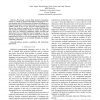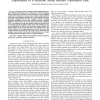101
Voted
ACL
2012
13 years 2 months ago
2012
We present a novel algorithm for multilingual dependency parsing that uses annotations from a diverse set of source languages to parse a new unannotated language. Our motivation i...
124
Voted
ACL
2012
13 years 2 months ago
2012
Reordering is a difficult task in translating between widely different languages such as Japanese and English. We employ the postordering framework proposed by (Sudoh et al., 201...
127
Voted
CSFW
2012
IEEE
13 years 2 months ago
2012
IEEE
—We present a secure (fully abstract) compilation scheme to compile an object-based high-level language to lowchine code. Full abstraction is achieved by relying on a fine-grain...
153
click to vote
AOSD
2012
ACM
13 years 8 months ago
2012
ACM
Emerging languages are often source-to-source compiled to mainstream ones, which offer standardized, fine-tuned implementations of non-functional concerns (NFCs)—including pers...
121
click to vote
EMNLP
2011
14 years 5 days ago
2011
We propose a relaxed correspondence assumption for cross-lingual projection of constituent syntax, which allows a supposed constituent of the target sentence to correspond to an u...
127
click to vote
EMNLP
2011
14 years 5 days ago
2011
When translating among languages that differ substantially in word order, machine translation (MT) systems benefit from syntactic preordering—an approach that uses features fro...
112
Voted
CHI
2011
ACM
14 years 4 months ago
2011
ACM
In this paper, we present MonoTrans2, a new user interface to support monolingual translation; that is, translation by people who speak only the source or target language, but not...
102
click to vote
ACL
2011
14 years 4 months ago
2011
We present an SCFG binarization algorithm that combines the strengths of early terminal matching on the source language side and early language model integration on the target lan...
138
click to vote
TASLP
2010
14 years 7 months ago
2010
Abstract--This paper presents a model for machine aided human translation (MAHT) that integrates source language text and target language acoustic information to produce the text t...
116
Voted
COLING
2010
14 years 7 months ago
2010
In this paper we address methodological issues in the evaluation of a projectionbased framework for dependency parsing in which annotations for a source language are transfered to...




